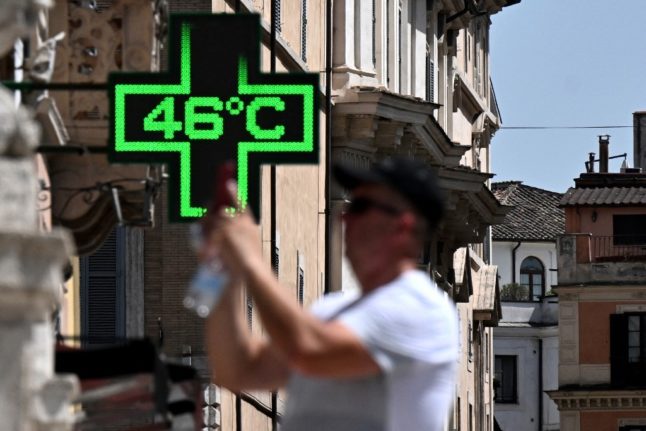Italy is sweltering under its third heatwave of the summer, with temperatures not due to start dropping until the end of Saturday.
To warn citizens of the potential health threat posed by the weather, Italy’s health ministry issues three-day alerts, updated daily, with heat risk levels for the country’s major cities.
A ‘red’ alert is the highest-level warning, followed by orange for medium-high and yellow for a medium-low risk alert.
Green is level zero, signifying no heat risk.
Here’s what the country looks like as of Wednesday, August 23rd:
A total of 17 cities – Bologna, Bolzano, Brescia, Florence, Frosinone, Genoa, Latina, Milan, Naples, Perugia, Rieti, Rome, Turin, Trieste, Venice, Verona, and Viterbo – have been placed under a ‘red’ warning, with the north of the country and central Tyrrhenian areas particularly suffering from the high temperatures.
A red alert means the heat poses a threat to the general population, not just to more vulnerable groups such as young children and the elderly.
Campobasso in Campania and Bari in Puglia are ‘orange’ level, while Ancona, Cagliari, Catania, Civitavecchia, Messina, Palermo, Pescara, and Reggio Calabria are ‘yellow’ level – though Ancona is due to become orange from Thursday.
Currently no Italian cities are at the zero-risk green level.
Italy’s official government advice for staying safe in a heatwave includes staying indoors during the afternoon when the heat is most intense, drinking plenty of water, and avoiding exercise during the day.
The current high temperatures are expected to last into the middle of the weekend, when a period of unsettled weather is due to arrive from northern Europe, bringing violent storms, hail and intense winds to the centre-north of the country.



 Please whitelist us to continue reading.
Please whitelist us to continue reading.
Member comments